-
During
Steward Observatory observing time,
a international consortium (including JPL, MPIfA, Caltech, UM, SO, and
SMTO) used a prototype Chirp Transform Spectrometer (CTS) built by
the Max-Planck-Institut of Aeronomy to study the comet
Hale Bopp in a series of runs in both 1996 and 1997. These observations
used the Martin 460 GHz receiver
at the HHT in October/November 1996. The group obtained the
first detections of the CO J=4-3 line at this time. In March/April 1997,
the group returned and obtained a number of molecular observations.
These observations are currently being written up
and any references to these results
should be to made to the appropiate paper cited below.
Interested parties should contact Joseph McMullin. Two highlights of their work are presented below:
CO Production Hartogh et al (1998) - in preparation CO Spectrum (Nov 1996) shows the integrated line area of the CO(3-2) and CO(4-3) lines for several days in November 1996. The error bars are dominated by the uncertainty in locating the spectral baseline. The error bars do not account for a ~10% uncertainty in estimating the telescope efficiency. This error source would apply a constant multiplicative factor to the CO (4-3) data. Thus, the relative values of the (3-2) line areas are unaffected by this error, but the (3-2)/(4-3) ratio could change.
The CO Production Rate (T=40K) is derived from the observations. The coma is assumed to be isothermal, in equilibrium at 40 K and the gas is assumed to have a constant, radial velocity of 0.5 km/s. The jump in production rates between November 10 and 11 is smaller if the assumed coma temperature is actually higher (see T=60K ), but the trend still suggests a strong increase in activity over this time period. The comet's heliocentric distance decreased by 2% between November 6 and 10, while CO production increased by 60%.
The T=60K CO Production Rate is identical to the previous calculation, except now the coma temperature is taken to be 60 K. While the data strongly suggest an increase over time, note that the error bars allow for a roughly constant CO production rate near 1.2E29 molecules/s, particularly if the gas excitational temperature is high. [For the CO(3-2) observation of November 10th and the CO (4-3) data of the 11th to yield the same production rate (~3.2E29 molecules/s) the excitation temperature would have to be ~140K.]
H2CO/HCN Observations Hofstadter et al (1998) - in preparation Simultaneous observations of the H2CO line at 351.768 GHz, which appears near a velocity of zero, and the HCN (4-3) line at 354.5 GHz. Note the shape of the lines are "flipped" due their being in different sidebands. The lower curve (red) is for observations near 3:30 LST on March 29, 1997, while the upper curve (blue) is for 4:15 LST of the same day. The apparent time variability may be due to pointing errors.
Next, we display the short-term time variability of the integrated line areas for the H2CO and HCN lines. The error bars include an allowance for antenna pointing being off by the beam half width (10"). This term dominates the error budget.
The HCN/H2CO ratio is calculated based on the data from the short-term time variability. As before, possible pointing errors dominate the error budget.
- During March and April 1997, comet Hale-Bopp's continuum emission was simultaneously monitored with the HHT/SMTO (0.35 mm, 0.9 mm and 1.3 mm using the 4-color bolometer), IRAM 30m telescope on Pico Veleta (1.2 mm), Plateau de Bure (1 mm and 3 mm), and Effelsberg (9 mm). The comet was much brighter than expected (IAU telegram 6555, Kreysa et al.). For the first time a comet core has been observed with single dish telescopes and an interferometer (IAU telegram 6587, Wink et al.). The core diameter is about 45 km, the ice grain halo's diameter is about 10,000 km. The extended halo is much larger. The radio spectrum of the halo is similar to that of comet Hyakutake. (PI: W.J. Altenhoff, MPIfR, Bonn)
-
In early March this year the comet was observed with the 345 GHz and
230 GHz heterodyne receivers connected to the 1 GHz facility AOSs.
HCO+(4-3) and HCO+(3-2) as well as CO(2-1) were detected.
IAU telegram 6591 summarizes
those observations. This thumbnail image shows one of the
HCO+(4-3) spectra.
-
During the MPIfR
observing time in April this year, HCN, HNC and CS transitions
in the 230 GHz window have been observed with the 1 GHz AOSs and the
230 GHz receiver. A comparison of
CS isotopes has been carried out.
Maps of
CS 5-4 and
HCN 3-2 have been obtained.
Click on the thumbnails to get a larger image.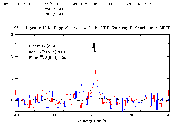 CS isotopes
CS isotopes
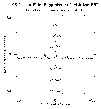 CS 5-4 map
CS 5-4 map
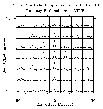 HCN 3-2 map
HCN 3-2 map
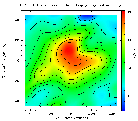 HCN 3-2 integrated intensity
HCN 3-2 integrated intensity
Last modified: 04 March, 1998
Contact: Harold M. Butner (hbutner@as.arizona.edu), Dirk Muders ( dmuders@as.arizona.edu)








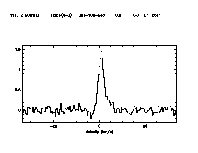 HCO+ 4-3 spectrum
HCO+ 4-3 spectrum